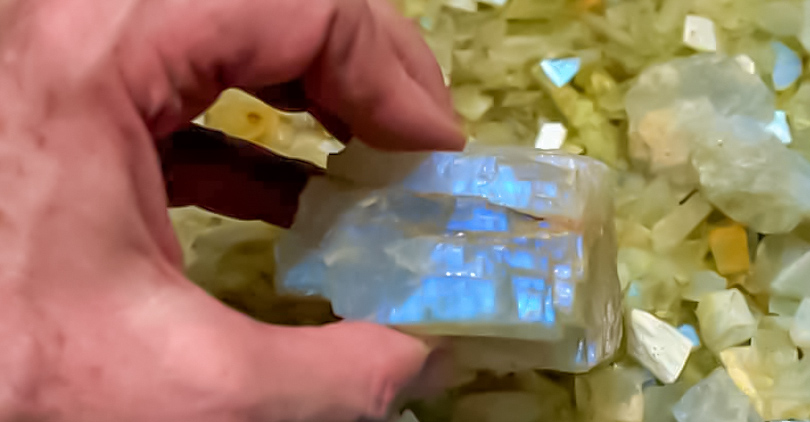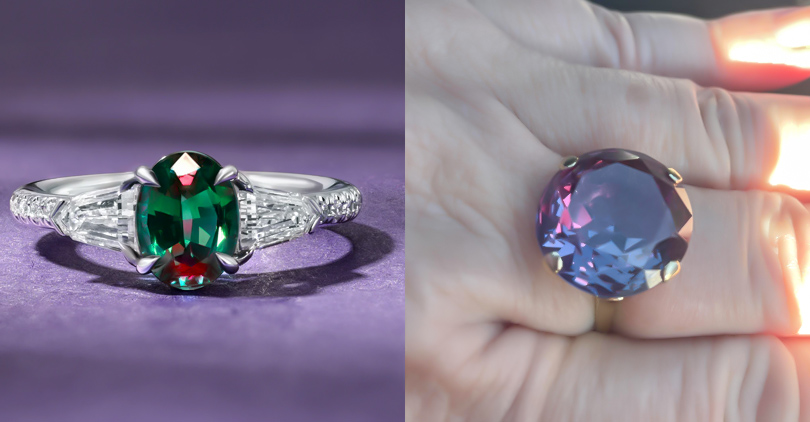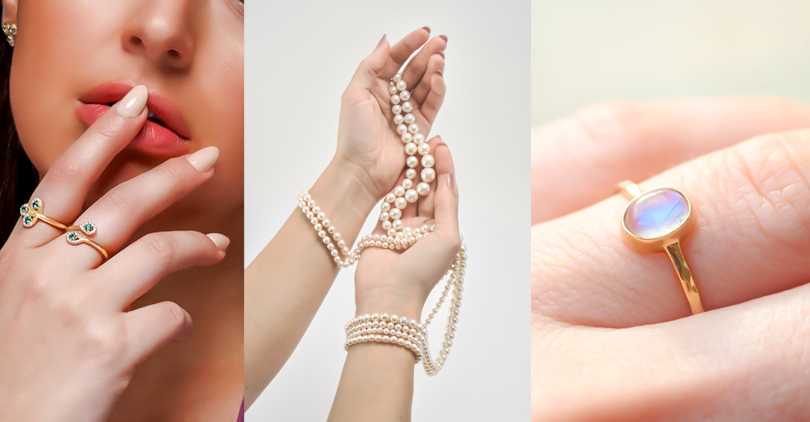June Birthstone Guide: Pearls, Moonstones, and Alexandrites for Gem Lovers


Welcome to our guide on June birthstones—Pearls, Moonstones, and Alexandrites. For people who love gems, this month is especially good because there are three beautiful ones associated with it.
Birthstones aren't just pretty gems. They have cultural significance and personal meaning—nature's own way of celebrating our month of birth.
Pearls might be your first choice if you like things that never go out of style. But if you prefer colors and sparkle, don't miss Moonstones or Alexandrites—they do amazing things when light hits them!
All three June gemstones are well-liked by jewelry fans everywhere, whether classic styles or new designs appeal more. Discover what makes these stones fascinating by exploring the facts and fables behind each one.
Pearls: Timeless Elegance of June

Pearls have always been admired and are considered to be one of June's birthstones. These oceanic gems shine by themselves since they are classic and beautiful.
Pearls are different from other precious stones because they come from the sea. For thousands of years, people have been fascinated by these rare gems that nature gives us as a gift from the water rather than the earth.
Historical Significance and Myths

Throughout history, people have prized pearls for more than their looks. Pearls' symbolism has also played a role.;
For instance, ancient societies viewed the gems as representations of purity and love. They frequently appeared in wedding ceremonies to signify both fresh starts and fidelity that would last a lifetime.
Meanwhile, ideas about where pearls came from added another layer to their appeal. Ancient peoples believed these gemstones were droplets shed by gods or goddesses up high. Or they were viewed as tears cried by angels, which were then solidified when they hit ocean water.;
In other words, divine sorrow condensed into a beautiful form equals a pearl. The stories behind them help make pearls intriguing even now.
Formation and Types

Foreign objects like grains of sand can get into oysters, clams, or mussels. The mollusks respond by coating the irritants with layers of an iridescent substance called nacre. Over time, this build-up becomes a pearl.
Pearls can occur naturally without people, though this is unusual. But most of the products on the market these days are cultured. Humans initiate the process by manually inserting an irritant.
There are various types of pearls, each with its own attributes. Akoya pearls, which mainly come from Japan, are ideal spheres of lustrousness. Golden and white South Sea pearls obtained from the Philippines, Indonesia, and Australia are bigger than average. And they have a creamy color that is very coveted.
Tahitian pearls come in alluring dark tones, from metallic silver to deep black. Freshwater pearls are available in an array of colors and shapes. They're grown in lakes and rivers within China, meaning they're both versatile and affordable.
Cultural and Modern Relevance

A mainstay in wedding jewelry, pearls still convey purity and grace—just ask any bride. But don't think they're only for weddings.
Celebrities often wear them on the red carpet. Fashion-forward types sport them with everything from jeans to eveningwear. The reason? Pearls go with stuff—couture or T-shirt-jeans combo.
Care and Maintenance

;To keep pearls looking their best, care for them carefully. Use a soft cloth dampened with water to wipe them clean rather than immersing them in soapy water. Avoid abrasive cleaners that can wear away the nacre.
Pearls should be stored separately from other gems and jewelry. A fabric-lined pearl folder is ideal. Metal edges or the hard facets of other stones can scratch them.
Avoid storing pearl jewelry in excessively hot or dry areas, such as on a sunny windowsill or near a heat source.
Moonstones: Mystical Glow of June

Moonstones have a captivating play of light and romantic beauty. They are the spellbinding June birthstones. They seem to possess the magic of the moon.
Jewelry enthusiasts and mystics have been entranced by these gemstones for centuries. They are famous for their ethereal glow, iridescence, and association with all things mystical!
Historical Significance and Myths

Moonstones are considered to be sacred in numerous societies due to their close association with lunar gods and the moon's cycles. They often symbolize feminine energy. Besides, they are said to encourage traits like intuition, healing, and balance.
Ancient beliefs held that because this gem can absorb light and then emit it later, it possesses enchanting properties. They are capable of bestowing blessings or boosting an individual's mystical prowess.
According to lore, during full moons, these precious stones become even more magical. They are peaking in revealing secrets and supernatural communication.
Formation and Types

Moonstones are a type of feldspar that has an interesting shine called adularescence. This means that when you move a moonstone, it looks like there's a ghost inside, making waves of light!;
Adularescence happens because the stone is made of different feldspar minerals. They scatter light as it travels through them.
Many people think Sri Lanka is the main place to find top-quality moonstones. They have the best blue sheen. But they are also mined in India and Madagascar.
Each country's gem mines produce stones with special features. For example, Indian ones might have rainbows inside them when they're held up to light!
Cultural and Modern Relevance

Moonstones became popular in the Art Nouveau era because they fit well with the style's natural shapes and designs. Designers like René Lalique and Louis Comfort Tiffany used them often.
In modern times, moonstone jewelry goes well with bohemian fashion or clothes linked to a holistic lifestyle. Some people think these stones have curing effects as well as being beautiful, which is why they are still used today.
You can find them frequently placed in earrings, rings, and pendants. This way, you can appreciate their tranquil blues and enchanting gleams from just inches away.
Care and Maintenance

If you want to take care of your moonstones, remember that they are fairly soft and can get scratched easily. To clean them, use warm water and mild soap with a soft cloth.
Do not use any chemicals or heat, as these could change the color or make them lose their shine. When storing your moonstones, keep them separate from harder pieces so they don't scratch each other.
It's also best to avoid very hot temperatures or places with too much direct sunlight. Aim for somewhere cool and dry if possible. This way, your moonstone jewelry will look beautiful for longer!
Alexandrite: Color-Changing Gem of June

Alexandrite is a gemstone linked with June. It is rare and captivating because of its special talent. It changes color based on the light source.; The phenomenon—referred to as "emerald by day, ruby by night"—makes alexandrite one of the most sought-after gems among collectors.
Historical Significance and Myths

This gemstone was found in Russia's Ural Mountains during the 1830s. Because Czar Alexander II was about to take the throne when it was discovered, people named it after him. They viewed owning one as a patriotic symbol showing love for their country.
Can you imagine it? Everyone was shocked when they realized this stone looked green in sunlight but red under incandescent bulbs. It's why wealthy Russians called alexandrite "emerald by day, ruby by night" (which sounds way better in French: "émeraude le jour, rubis la nuit").
They loved making up stories based on facts like these. One myth says alexandrites can bridge opposites. The reason is that they change colors between day and evening light.
Formation and Types

Alexandrite has an exceptional ability to change color, thanks to chromium. This rare variety of chrysoberyl reflects light differently because of this trace element.
Depending on whether you see it in daylight or lamplight, for example, it might appear greenish-blue or purplish-red. And it can even seem like two different colors at once!
You could once only find high-quality alexandrites from Russia's Ural Mine. But, there are new deposits in Brazil, East Africa, and Sri Lanka, too. Each one has its own special appeal, and some stones from these places can outshine older ones.
Cultural and Modern Relevance

Alexandrite is a rare gemstone that possesses unique qualities, causing it to be highly valued in the world of fine jewelry. Collectors and experts especially cherish this stone because of its ability to exhibit two different colors at once. Besides, it has some interesting tales linked with finding it and its importance in history.
Today, in jewelry-making circles, natural alexandrite is scarce and costly. Its high price also signals wealth and sophistication. Designers frequently use it solo. They prefer to match alexandrite with diamonds around it to boost color change in their most exclusive pieces.
Care and Maintenance

To keep its color-shifting properties and clarity intact, Alexandrite needs to be handled with care. It can be cleaned using mild soap and warm water, along with a soft cloth.
Avoid harsh chemicals or ultrasonic cleaners as they may cause damage. When not being worn, store Alexandrite jewelry by itself to prevent scratching. Ideally, wrap it in a soft cloth or place it inside a padded jewelry box.
Conclusion

As we have discussed, June has not just one but three beautiful birthstones. They are pearls, moonstones, and alexandrites. Each has its own special allure and intriguing qualities.
These gems can enhance personal style and have been full of deep cultural meaning. This way, they are ideal for both celebrating individuality and showing a loved one how much they mean to you.
If you adore the timeless glamour of pearls, then these might be the June birthstone for you. Perhaps you're more captivated by moonstone? Or maybe it's Alexandrite's dramatic color changes that speak to your sense of drama best?
Whatever type of beauty makes your heart beat faster, there is a gem out there for everyone born in June. And wearing it promises daily doses of magic, too!


Leave a Comment